
If you ever asked me to take you to the most picturesque place in Bhutan, I would bring you here.
As you cross the dense pine forests after Yotongla Pass from Trongsa, you’ll suddenly enter a wide open space filled with vast farmlands, clusters of picturesque traditional Bhutanese houses, apple orchards and scattered temples on hills. This is Chumey Valley.
For a long time, Chumey has always been a place we just drove through on our way to Chamkhar town in Bumthang. It was just a pretty valley. But after I got an invite from a resort here, I decided to spend more time and learn more about Chumey than just its natural beauty.
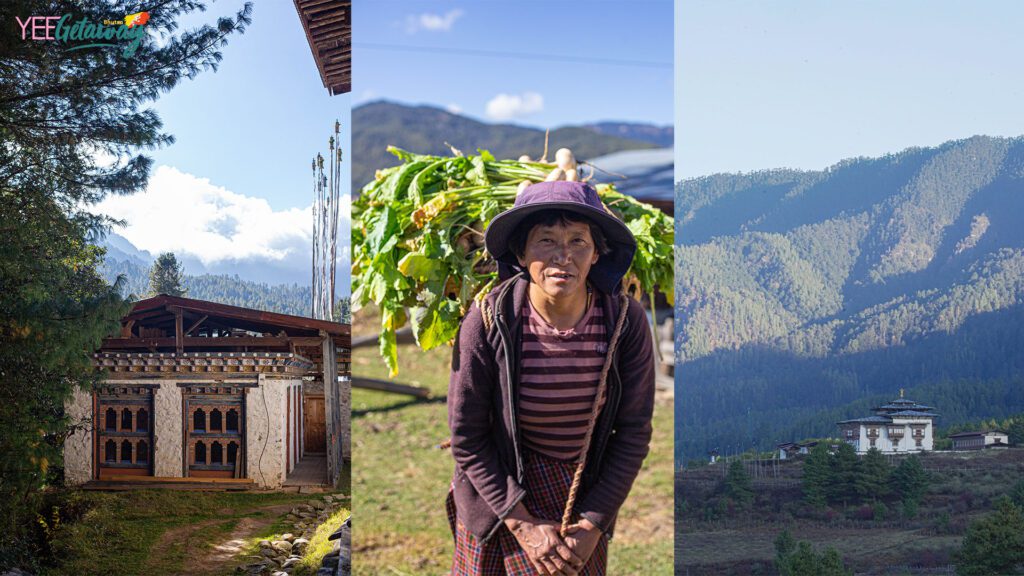
The Four Valleys of Bumthang
Bumthang is divided into four valleys namely Chumey, Chhokhor, Tang and Ura. Did you know that Chumey was actually called “Chhu Mig” in the old days? The valley was actually named after an unknown spring water that appeared in the valley where the water flowed like tears from an eye. Hence “Chhu Mig”. This beautiful valley is also the home of our Beloved Queen Her Majesty Gyaltsuen Jetsun Pema Wangchuck’s maternal Family.
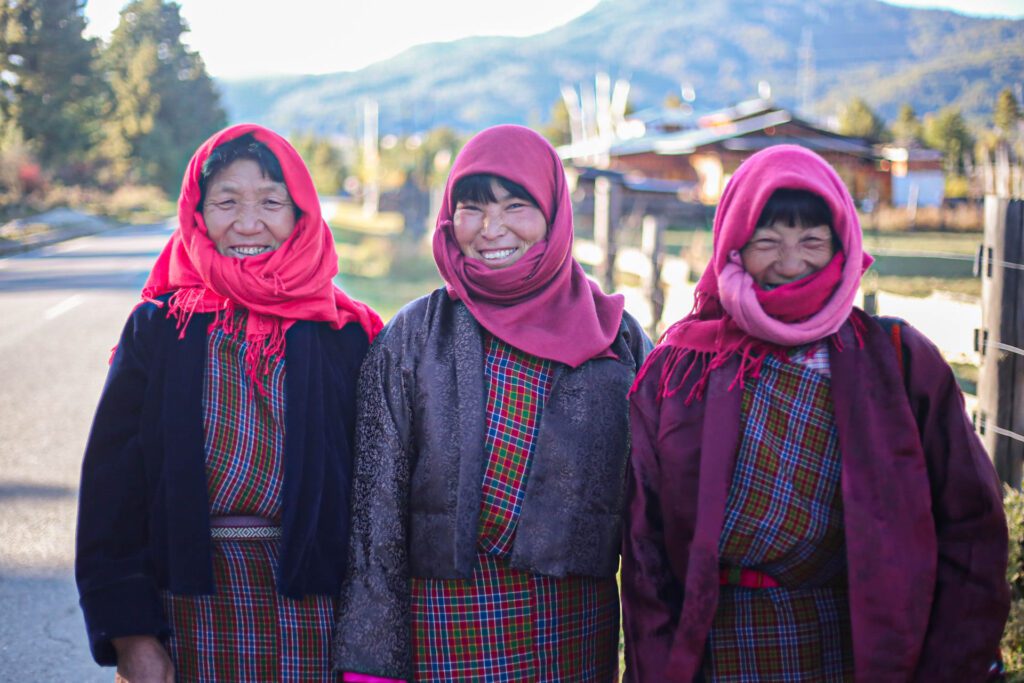
The People
One of the most distinct features of Bumthang is the unique head “accessory” that the Bumtap women wear. Known as the “Gora” in Bumtap Kha, the women here don a head scarf. I came across a group of women heading towards Geytsa village wearing all colors of the head cover. “It’s usually the white cloth made for children’s nappies”, one of the ladies told me. “Yes we put that on our heads,” said another laughing. “Zha bu zi zhu?” I asked enquiring why women here wear the head scarves. “Khig tsa tshin.” (It’s so cold) they said laughing at my absurd question. Even the baby on the lady’s back was giggling.
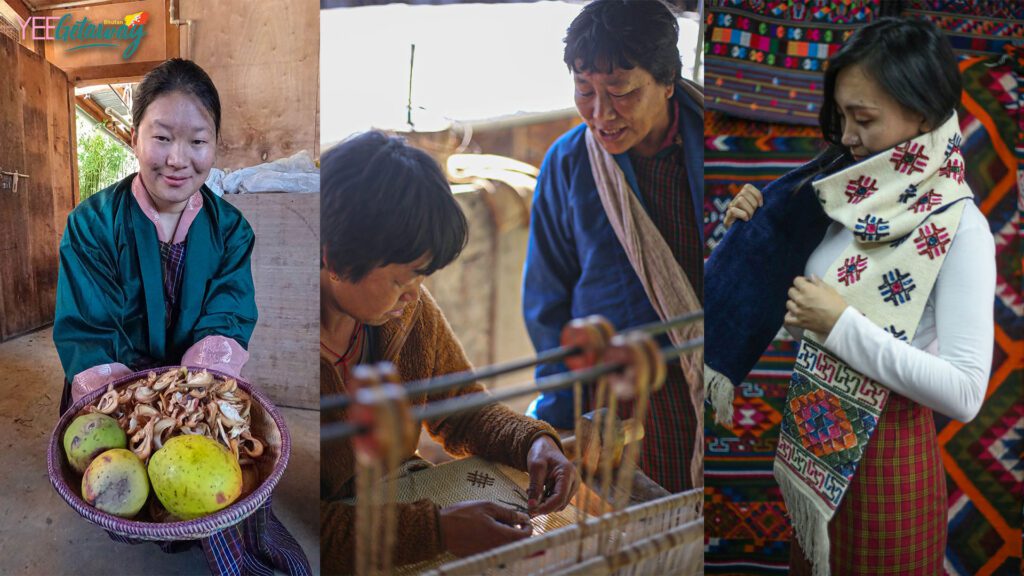
The Home of Bumthang’s Yathra Textiles
Did you know that Chumey valley is the home to Bumthang’s traditional textile “Yathra“? Aum Sonam, who owns one of the popular textile shops in the valley, told me the story of how this textile came to the valley. Once upon a time, the Tibetan King Songtshen Gampo sent his subject to China to bring him Princess Jatsa to be his wedded wife as per a prophecy. Disheartened, the Queen mother consulted a Jowo Deity of her land who told her that the princess had already been taken to the land down south.
In fury, the Queenmother cursed the princess and the entourage to never arrive at their destination. It is believed that they had with them sheep of different colors like red, blue, yellow and green. Because of the Queen’s curse, the group encountered floods and broken bridges which took away all the sheep except the ones colored black and white. Ama Sonam shares that the princess on her journey to the King, spent years in this valley where she wove the sheep wool textile all by herself. “The old textile was woven in the traditional “pangthag” loom which is the vertical loom. Today most of these textiles are woven on the “Thrithag” the modern loom.
In the later years, Late Queenmother Ashi Phuntsho Choden during her stay at Domkhar Palace is said to have further developed this art and empowered local women in the valley to earn a living through this tradition. “The support from our Royal family goes a long way in keeping this art alive,” says Ama Sonam as she shows me a picture of herself with His Majesty the Druk Gyalpo.
ou’ll meet a mother-daughter duo working passionately on preserving an age-old craft.
For more details on @druk_yathra you can contact the family at 17419856.
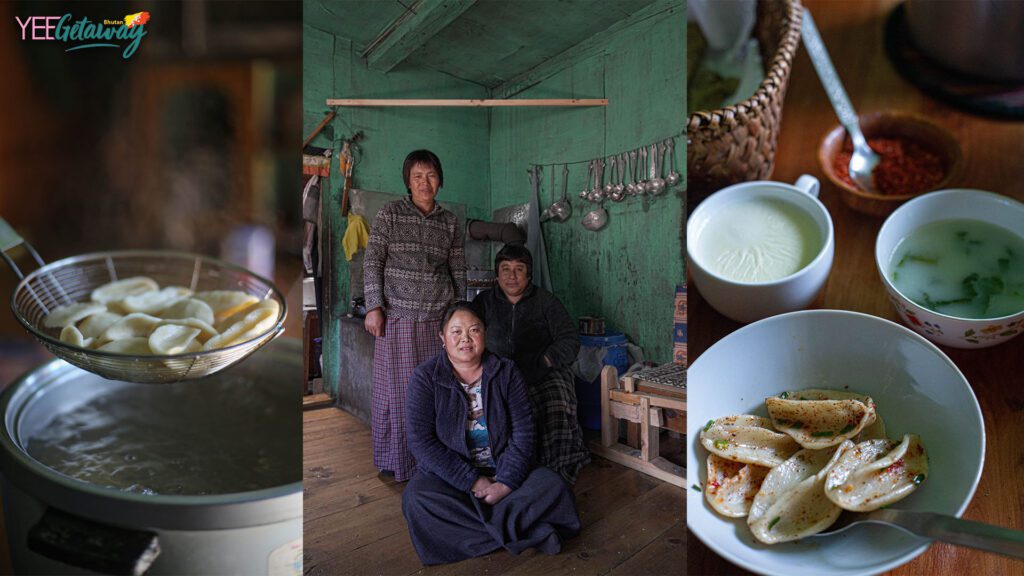
Discover Unseen Bumtap Dishes in Chumey
I’m Bumtap from my father’s side but I feel ashamed to admit that I don’t speak the language well, don’t know many of my paternal relatives and there are many things about Bumthang that I don’t know. Such as the FOOD.
When we visited this quaint restaurant near the highway, we didn’t expect to be completely surprised with what the lady served our table. It is known as KHARI. Similar in taste like the Jangbuli (the closest reference I can give you is the pasta) Khari is made from maida flour and is much softer and chewier. The dough shape is a design I’ve never seen before and the flavour with pepper, chili powder and fresh butter is just so yummm! Yup that’s how I would describe it.
Aum Yidga, the owner graciously served this dish with butter tea, potato pasties (kewa Baley) Baktsi Makhu (a sweet dish made in fresh butter) and fresh ezey. If you’re in Chumey and want to taste delicious local cuisine, visit Yidga Restaurant. Call her in advance if you want her to serve you the KHARI. Contact Yidga Guest House at +975 17600431.
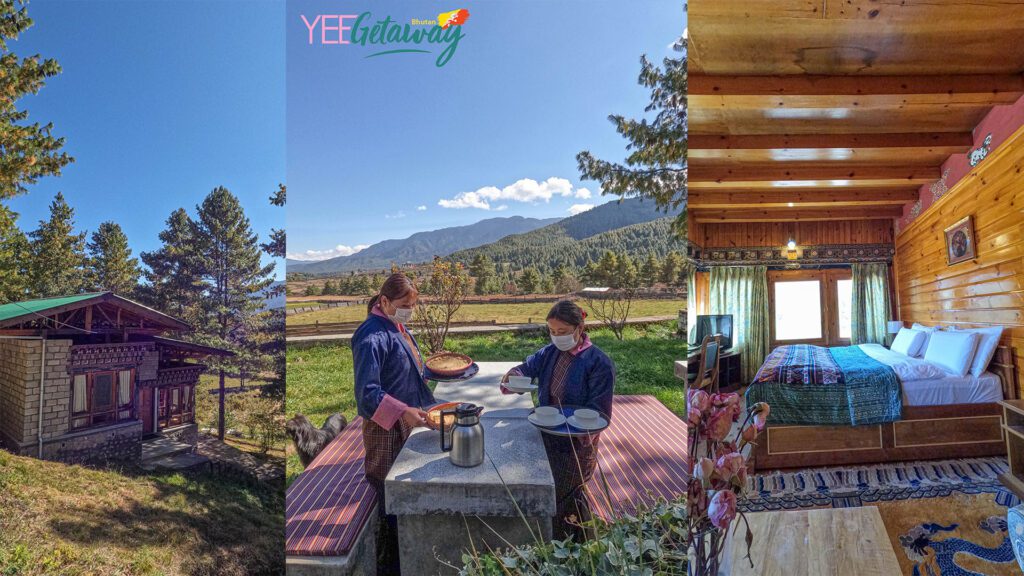
Explore Local Hotels
There aren’t many hotel options in Chumey but if you’re looking for a comfortable stay in the pristine valley, try the Chumey Nature Resort. The resort has a spectacular view of Domkhar palace. Chumey Nature Resort opened my eyes to the beauty of Chumey Valley. The 3 Star Resort can plan your customized tours and programs around the valley from biking and hiking tours to village tours.
For more details contact +975 17956291. Check out their facebook page here.
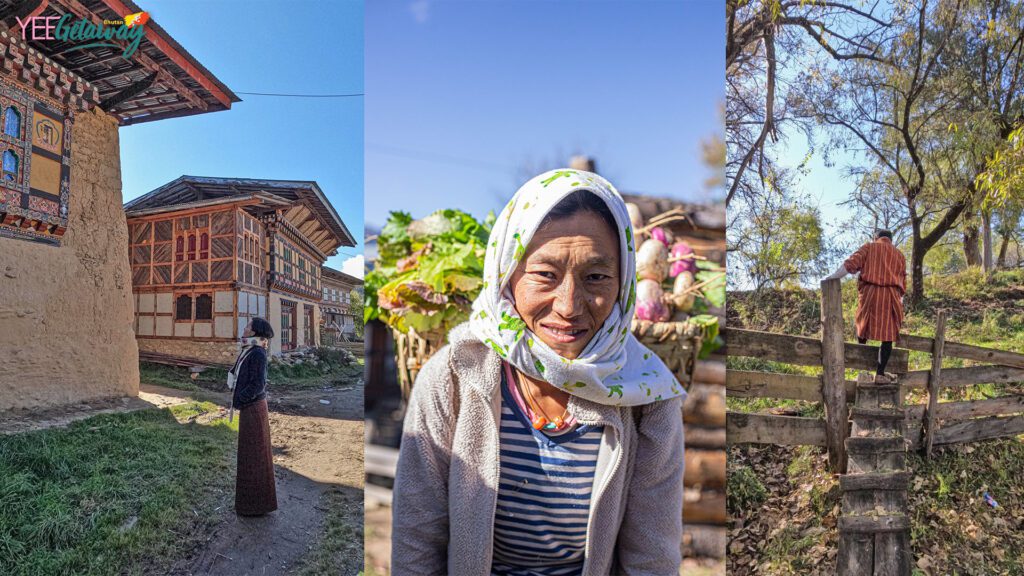
Village Tours in Domkhar Village
The wide valley of Chumey is home to some of the most beautiful little villages in Bhutan. Domkhar village close to Domkhar Palace is one such hamlet. Once known as Dungkar village named after the Conch Shell shaped lake found in the village, the traditional settlement has a clear pathway that takes you around the settlement. You can meet local residents, and also be a spectator to the traditional homes that have lived on for generations. During my walk in the village, I met local women carrying baskets full of turnips. The locals are very friendly and make beautiful portraits for pictures. Be sure to ask for permission before you take photographs.